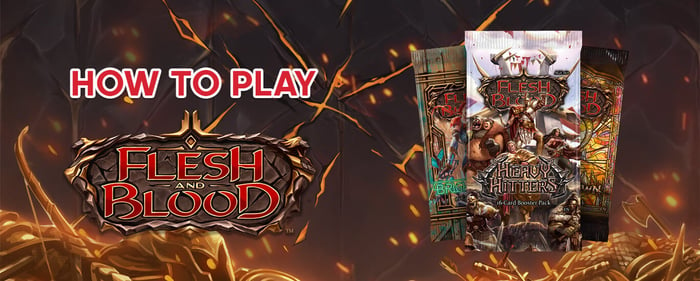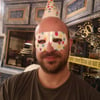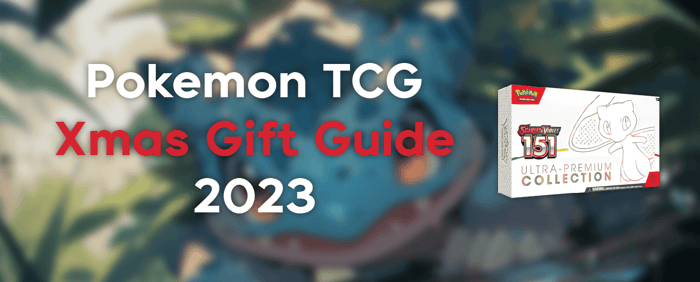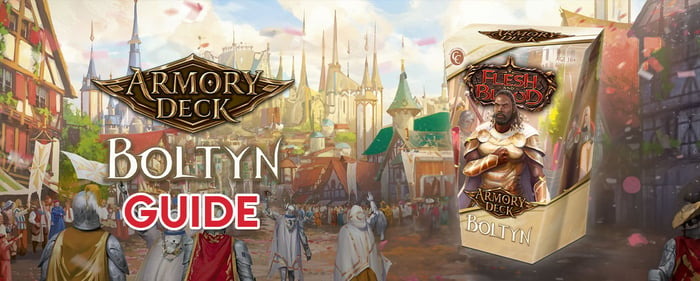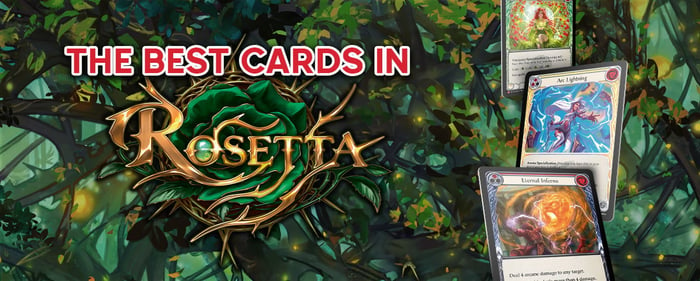Table of Contents
About Flesh and Blood
So you wanna play Flesh and Blood? Are you ready?
Bursting into the scene in late 2019, Flesh and Blood TCG is one of the newest and fastest rising TCGs we have seen in recent years. Combining deck-building with an ever increasing card pool, with strategic combos and tactical stacking of your deck for the late game win, Flesh and Blood combines tropes from various TCGs into one fast-paced 1v1 package.
The First Step
First things first! Pick a format. Blitz is fast-paced with minimal investment, whilst Classic Constructed (CC) is for the most experienced player, with longer games, deeper strategies and more tactical thinking needed to pull off the win.
The Basics
The first thing you need for a game of Flesh and Blood is an opponent!
So, grab your spouse, partner, parent, sibling, friend or, if worst comes to worst, sworn enemy (I like to go for the throat on this one 😉) and sit them down across the table from you.
The second thing you need for a game of Flesh and Blood is to choose your Hero.
You are spoiled for choice when it comes to Heroes! Spoiled!!!
Boasting, at the time of writing, a roster of 46 Heroes with 13 different Classes. Heroes range from the versatile Warriors like Dorinthea, Kassai and Olympia, to the stalwart Guardians like Betsy, Valda and Victor Goldmane. From the fierce Brutes like Kayo and Rhinar, to the swift Ninja like Benji, Ira and Katsu, and more besides.
Some Heroes come with a prefix to their Class, those being Draconic, Elemental, Light and Shadow. These give the Heroes additional mechanics and card pools to choose from when deck building. However, with most choices comes greater flexibility and complexity.
After choosing your Hero, the next thing you need is a play area. Any old table will do, hell, the floor works if you’re wanting for space. Playmats are optional but not required. Also, sleeves! Always sleeve your cards!
With your opponent sat across, your Hero chosen, and the play area set, now comes the Set-Up.
The Set-Up

The example above is the usual board set up, with the Hero card in the centre of your play area and their weapons either side.
The equipment cards are arrayed on the right-hand side of the play area, with the Body and Hands level with the Hero and Weapon cards and the Head and Feet cards above and below the body, respectively.
Just a suggestion: if this is your first time playing, leave the equipment aside. Get a feel for how a match flows and how cards interact before adding more choices and options with the equipment.
Please note not all Heroes have two weapons.
The Draw Pile is shuffled and placed on the left-hand side of the play area, leaving room above and below for the Discard and Banishment zones, respectively.
The Arsenal, Banishment, Combat Chain, Graveyard and Pitch zones are left empty during set-up, but are used later during play.
Once the Set-Up is complete, it’s time to decide who goes first! There are myriad ways to determine the first player. Rolling dice, Rock-Paper-Scissors, arm wrestle… The list goes on!
Whichever way you and your opponent decide who does first, the next things to do are draw up to your hand limit and determine your Heroes starting health points.
Heroes

A Hero's hand limit is shown in the lower left-hand corner of the Hero card. The blue symbol. In the picture above, the Guardian Hero, Bravo, has a hand limit of 4. Many, if not all, of the other Heroes, have the same hand limit.
Heroes starting health points are shown in the lower right-hand corner. The green symbol. Here’s where things get interesting. As shown above, the Young Bravo has 20 health points. However, as shown below, older versions of many Heroes have larger health pools, usually 40. These Heroes are used in the Classic Constructed play format, whereas the Young Heroes are used in the Blitz format.

Once health is set and hands of cards are drawn, it’s time to play.
After determining who will go first, players draw up to their hand limit.
This is important, you must choose who is going first before looking at your cards, as drawing a poor hand could influence that decision. Also, there is NO Mulligan in Flesh and Blood! That crap hand you just drew… you gotta play with them cards.

The Pitch Value of a card is depicted in the upper left corner. Depending on the colour of the card, you’ll get either 1 (Red), 2 (Yellow) or 3 (Blue) Resource.
The Resource Cost of a card is depicted in the upper right corner. Cost vary from card to card, some being 0 cost, whilst some cost 4 or more. Some card have a cost of X or XX, the details of which are explained on said cards.
The Power Value of an Attack card is depicted in the lower left. The number shown here dictates the amount of physical damage dealt by the attack. Higher attack powers are most commonly found on Red cards.
The Defence Value is depicted in the lower right. This value is used to defend against incoming physical damage. Damage received is Power minus Defence. Using a card to defend is free, unless the card states otherwise.
The Phases
Now, a turn in Flesh and Blood has 2 phases:
The Action Phase
At the beginning of this phase, you gain 1 Action point. This point is expended to play an Action card.
Action cards come in a variety of types and 3 different colours.
Shown above are 3 of the main Action cards in Flesh and Blood are the Attack, Attack Reaction and Defence Reaction cards. Regardless of extra mechanics, all cards of the same type interact in the same way.
Other card types include, the ‘non-attack’ Action, the Instant and the Block.
Instant cards, like in MTG, can be used at any time. The only restriction, beyond the resource cost, is that they can not be played whilst an effect from a played card resolving. They can be played before action cards, after action cards, but before the effect triggers, after an action card effect resolves and before the end of a turn. Basically, at any time when a card effect isn’t resolving.
Example of an Action Phase:
Player A plays an Attack Card to the Combat Chain Zone, pitching another card or cards to the Pitch zone to pay the Attack card's cost. This forms the first link in the combat chain.
Player B plays cards from hand in defence.
Player A plays an Attack Reaction card, increasing the Power of the Attack card and pitching a card to pay the cost.
Player B has no Defence Reaction cards to play, so passes.
Player A has no more Attack Reaction to play, so passes.
Damage is calculated, total Power – total Defence.
All non-weapon cards got to the Graveyard Zone, and the phase moves to:
The End of Turn Phase
During this phase, cards used to pitch are flipped and placed at the bottom of the Draw Pile; if your Arsenal is empty and you have cards in hand you haven’t played, you may place one, face down, in your Arsenal. Cards in your Arsenal can be played in a later turn, however, there are a few restrictions on this card slot. Cards held there cannot be used to pitch or defend with unless the card is a Defence Reaction card.
Some cards have effects that trigger in the End of Turn phase.
Any unused Resource is lost.
Once you have chosen, or not chosen, a card to Arsenal, you draw up to your hand limit. If it’s the first turn, both players draw to their hand limits, and you pass the turn to your opponent.
The only zone not mentioned about is the Banishment Zone. Cards that get sent here, yeah, they’re gone. Like Exile, from MTG, you cannot play these cards unless a played card specifically allows you to interact with them.
Final Thoughts
If you’ve been playing along and gotten this far, CONGRATS, you have just completed your first turn.
Now you must wait and watch as your crafty opponent beats and grinds you down until your health hits 0 and you lose, weeping. Or, you hammer their face in and claim victory with a smug sense of superiority.
All jokes aside, I’ve been having a lot of fun playing within our group. Everyone seems to favour, or at the very least, like a different Hero, so there are always different and interesting mechanics and card types flying across the table. And whilst it is sad that most of the Heroes I want to play have entered Living Legend, basically a Hall of Fame where Heroes who win lots of tournaments end up and are thereafter no longer legal to play in non-Living Legend formats. There are so many other Heroes to choose from, so I can’t brood too much because I’ll just badger my group into playing Living Legends with me and cackle at the crazy overpower mayhem that unleashes.
One of my favourite things about Flesh and Blood is the minimal investment required to make something playable. A preconstructed Blitz deck retails for £11.99, but it’s even less at Gathering Games.
Another is that there isn’t a premium to get rare and valuable cards. Cold foils can usually be found, 1 per 24 booster packs or 1 per booster box, whilst the Legendary rare cards are 1 per 96 booster packs or 1 per 4 booster boxes.
In closing, remember that, at the end of the day, Flesh and Blood is just a game. And whilst winning is fun, it isn’t the be and end all. Sometimes it's better to lose and come back stronger with a better strategy.
Till next time, don’t forget, in Flesh and Blood, there’s only ever one winner….. the dude you buy the cards off! 😆
Peace out.
Shop Flesh and Blood TCG and all things trading card games here at Gathering Games.
